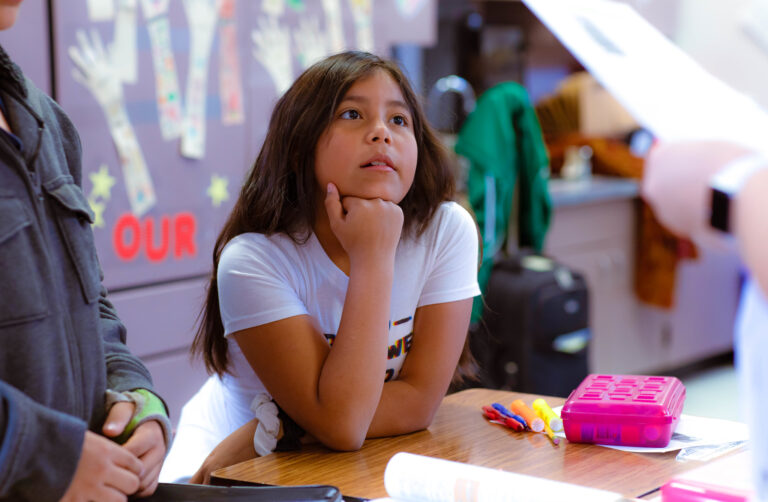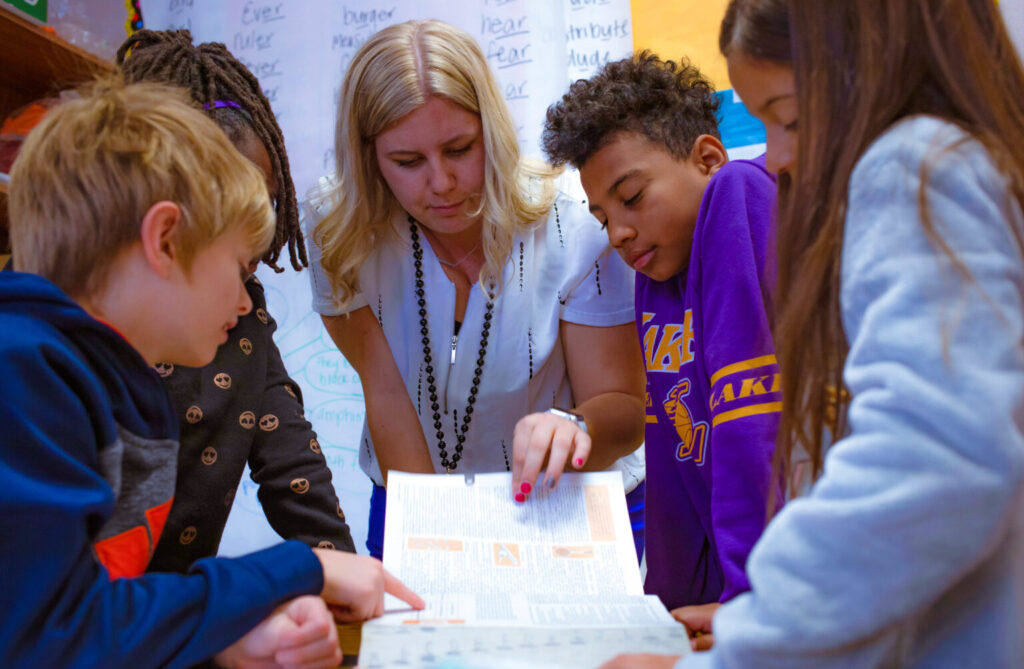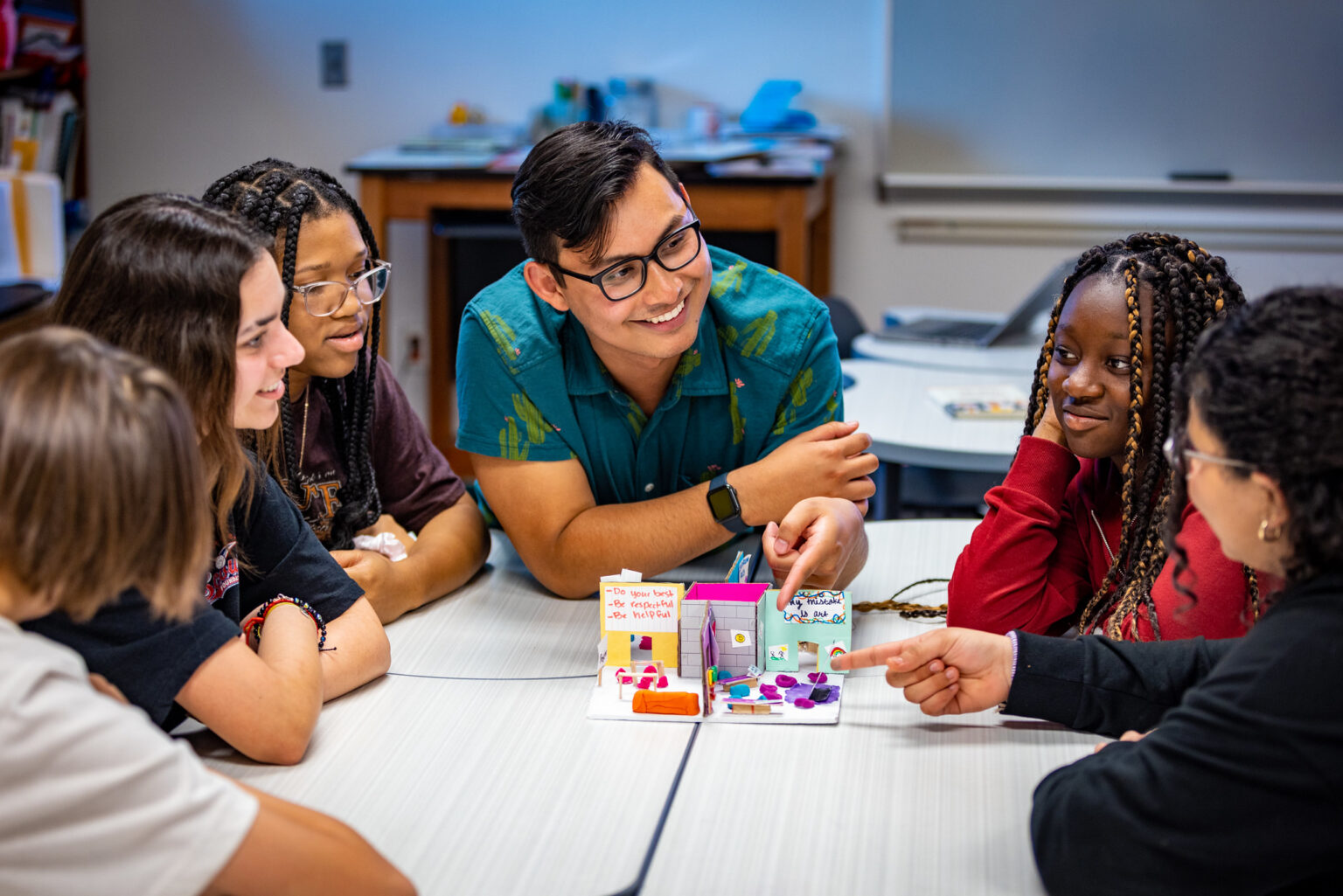This blog post was originally published by the Center for Reinventing Public Education.
Scaling up innovations within school systems is a notoriously difficult process. While new instructional approaches or staffing strategies may catch on within a few classrooms or schools, they often fail to become integrated system-wide. Leaders promoting change can achieve early wins by gaining the support of staff willing to leave behind old practices and try something new, but then can hit a wall when seeking buy-in from those who are more entrenched or risk-averse. One innovation theorist coined a term for the challenge of scaling from early adopters to the mainstream: “crossing the chasm.” To transition pilot programs into core school system operation, leaders need the support of staff members who may not jump at the chance to innovate.
For the last seven years, the largest school district in Arizona, Mesa Public Schools (MPS), has been scaling a team teaching model (or “teaming”) where groups of 3-5 educators — including licensed teachers, paraprofessionals and pre-service teachers — work with cohorts of 60-90 students. With one-third of their 82 schools currently implementing some form of teaming, district leaders have already attracted teachers and principals who see the staffing model as a way to radically reimagine and revive the teaching profession. They also won over some who were initially on the fence, but ultimately bought into teaming as a way to reduce isolation, learn from their peers and share responsibilities.
As MPS leaders confront “the chasm,” they are employing new strategies to reach the large swathes of staff that were not so easily convinced. These strategies, detailed below, may help other system leaders who are scaling up strategic staffing or other innovative models.

Creating a workable model with early adopters
When MPS began experimenting with team teaching in 2019, they used “start small” strategy by introducing the model in just a few classrooms in one school. Building on these early proof-of-concept pilots, the district slowly expanded from 1-2 teams per school to 4-5 teams, and then to the entire school. These pilots relied on early-adopter teachers, or those naturally interested in new ideas and willing to take risks. In the words of one administrator who staffed the early pilots: “It was just opt-in, so we weren’t worried about ruffling feathers. It wasn’t required, it was just an invitation. We described what it was with some excitement … so really it was the people who were intrigued by this idea.”
Among the early adopters who took on a team teaching role, many reported high levels of satisfaction with the new staffing model. For example, one MPS teacher who started in a traditional classroom questioned staying in the profession after her first year: “My first year of teaching was super, super hard … I just did not see how it was sustainable.” After working on a team during her second year, her experience dramatically improved: “I feel like I’m a totally different person and teacher. Totally different. And to the point that other people here totally notice it. It has changed the way I teach …[now] I never want to teach on my own. I love having the support of my team.” Another MPS teacher reported, “It’s really cool that we can bounce ideas off [each other] and help each other problem-solve from our different perspectives … I’ve loved that. That’s been a big difference.”
The pilot efforts’ successes have led the district to embrace team teaching and commit to implementing it in 50% (41) of its schools by 2025.
Moving beyond early adopters
To “cross the chasm” from early adopters to the rest of the staff, MPS leaders knew they needed a new set of recruitment strategies. Leaders are finding they have to move beyond the “open invitation” strategy that was successful with early adopters to gain support from the entire staff.
- Allow pilot leaders to adapt the model. Giving principals and teachers license to create a teaming model that works for their schools has been an important first step in fostering broader adoption. As one principal described, “We just experimented in a very thoughtful way with the support of [our university partner] and instructional coaches, and we then were able to go ‘whole school’ this year.” Another school leader lowered the barrier to entry by allowing the teachers engaging in teaming to define how and to what extent teaming would happen in their first pilot. “We had some people who wanted to dabble in it … so we just gave them permission to do what they thought would make sense,” they said.
- Create systems that make teaming easier for teachers.For team teaching to be successful (and less risky), teachers need systems that enable collaborative planning and frequent communication. One elementary school administrator cited her work in creating a new master schedule as the most valuable support she provides her team teachers. “[I make] sure that [teams] have common planning [periods] … five days a week in their schedule, making sure that they have big blocks of instruction time … I think schedules are [often] designed from what’s convenient for the specialists–the music, art, PE teachers, or … recess … we flipped it. I create from the lens of the teacher in the classroom and what makes the most sense.”
- Convert “soft power” teachers. If a teacher has outsized influence and respect, often called “soft power,” among the faculty, gaining their support can open the door to recruiting many others. One principal described working to convince a veteran teacher who had been at the school for over 40 years to consider alternatives to the traditional one-teacher, one-classroom model, “He, at one point, was my greatest critic. And when he caught the vision of what we’re trying to do … I said … ‘Why don’t you get out front and lead this with me? … [If] you’re willing to reimagine your classroom and what school can be, you know the impact that that’ll have on people.’ And he said, ‘Let’s go.’” Leaders may find that their proposed innovations get a warmer reception by staff once they have the support from these influential teachers.
- Facilitate peer recruiting. Another powerful recruitment tool for teaming was learning about it or experiencing it with the right set of peers. Some principals identified teachers they thought would thrive in the model and then matched them with peers who would help to make them feel more comfortable with teaming. One teacher was skeptical of team teaching before her principal invited her to try it out. “[My principal] was very intentional with what team she put me on and who she thought I could work well with … And now … I’m like, OK, I will talk to anyone [about teaming]. I will spread the word!” Another administrator described how teachers eventually took over recruiting in her school: “Some teachers would go to another teacher [and say,] ‘Hey, you should do this. Let’s do it together. Be my colleague. Be my team.’”
- Adapt hiring processes to identify candidates amenable to team teaching. Mesa Public Schools has amended their hiring process by creating and providing candidates with a “white paper” that explains team teaching, which helps principal candidates understand the model. The hiring team also facilitates questions during interviews about how candidates think about solving problems related to teaming. In terms of hiring teachers, principals in team teaching schools rely on hiring student teachers who are already familiar with the model.

To be sure, there are teachers and school leaders who, in the words of one principal, “just don’t want change. They don’t welcome change. So they just listened to us and said, ‘Yeah, have fun with that. Bye.’” Even with a host of new approaches to converting staff to team teaching, leaders will have to wrestle with what to do with the reluctant holdouts who may never want to cross the chasm. In such cases, the district might consider helping staff without interest in teaming to transfer to positions in traditional schools.
Mesa Public Schools has made considerable progress in introducing an innovative staffing model in pockets throughout the district. But for MPS to reach its 50% team teaching goal within the next few years, leaders need to adopt a different set of strategies to win over the hesitant mainstream. To keep scaling up, they need to:
- Continue reducing perceived risks and uncertainties associated with teaming
- Train up new teachers and school leaders on the model
- Share data and research on the benefits of teaming with unconvinced teachers
- Maintain clear and consistent messaging about the value of team teaching
As a technical support provider surmised, “That actually might be the sort of compelling data that are going to cause someone in the [mainstream] to jump in.”

